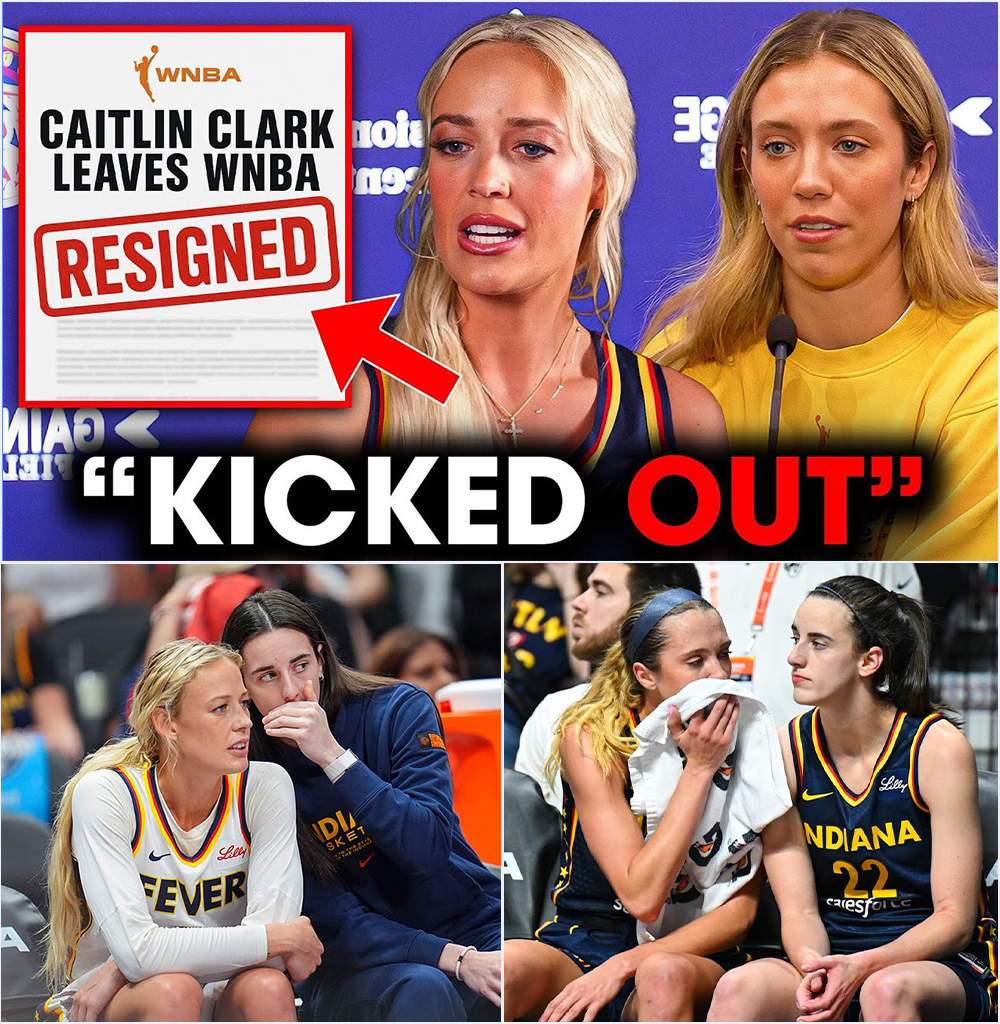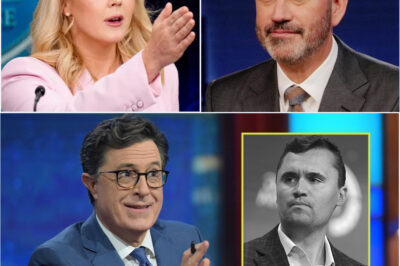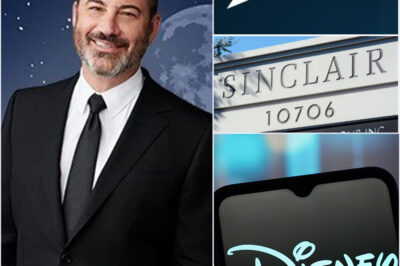
She was supposed to be the WNBA’s brightest new star — the rookie whose arrival would mark a turning point not just for the Indiana Fever, but for the entire league. And for a while, Caitlin Clark lived up to the billing, delivering sellout crowds, highlight-reel moments, and TV ratings the WNBA had only dreamed of.
But over the past month, a storm has been brewing around Clark. Hard fouls, missed calls, and whispers of an “old guard” resistant to change have turned her debut season into a lightning rod for controversy. The flashpoint came last week when social media exploded with the rumor that the league was “kicking her out” — not literally expelling her, but, in the eyes of some, sending a clear message: you can’t dominate here without paying a price.
And when two respected veterans, Sophie Cunningham and Lexie Hull, publicly came to Clark’s defense, the controversy went from locker room tension to a full-blown league-wide debate.
From Collegiate Phenom to WNBA Target?
Even before she set foot in the pros, Clark was a generational name in basketball. At Iowa, she shattered scoring records, turned March Madness into must-see TV, and drew crossover audiences that reached far beyond the traditional women’s basketball fanbase.
Her long-range shooting bordered on the absurd. Her ability to read the floor made her a nightmare for defenders. And her unapologetic confidence gave her the kind of presence leagues crave in a franchise player.
By the time she was drafted No. 1 overall by the Fever, Clark wasn’t just a prospect. She was a brand, a marketing engine, and — whether she wanted it or not — a symbol of where women’s basketball could go.
The Rough Welcome
The transition to the WNBA was never going to be easy. Rookies are expected to “earn their stripes,” and Clark faced the physicality and speed of the pro game from day one. But what’s unfolded this season has, in the eyes of many, crossed the line from tough defense to targeted hostility.
Clips of Clark taking hard fouls have gone viral repeatedly. In some games, she’s been sent to the floor multiple times without drawing the whistles many believe she deserved. Each missed call has fed the narrative that officials are letting defenders “send a message.”
By early August, the conversation had shifted from basketball to something bigger: Is the WNBA protecting its most marketable player — or allowing her to be tested in ways that threaten both her safety and the league’s image?
The Rumor That Lit the Fuse
During a Fever road trip, a combination of on-court clashes and questionable officiating decisions fueled a viral rumor: that Clark was being “kicked out” in a figurative sense — squeezed by forces that didn’t want her to revolutionize the game too quickly.
Hashtags like #ProtectCaitlin and #LetHerPlay trended for days. Analysts broke down every replay, every no-call, every substitution pattern. On sports talk shows, the question wasn’t whether Clark was good enough — it was whether she was being deliberately held back.
The league’s commissioner, Cathy Engelbert, addressed the chatter in a press conference, insisting the WNBA was “proud to have Caitlin Clark as a standard-bearer.” But by then, the narrative had legs.
Two Veterans Step Up
That’s when Sophie Cunningham and Lexie Hull entered the conversation — and refused to tiptoe around it.
Cunningham, a seasoned forward known for her competitive fire and willingness to speak her mind, didn’t hide her frustration:
“Caitlin isn’t just a great player, she’s great for our game. What she’s dealing with is more than basketball. She’s being targeted — on the court and off it. That’s not right. We’re supposed to uplift each other and grow the game, not tear each other down.”
Lexie Hull, a cerebral guard with a championship pedigree from Stanford, added her own pointed critique:
“We preach inclusivity, growth, and sportsmanship. But when our brightest new star faces physical play beyond what’s acceptable, or doesn’t get calls she deserves, it makes us look small and threatened. The WNBA needs to have her back, not push her out.”
The Fallout
The comments went viral within hours, racking up millions of views across platforms. Fans flooded the replies with messages of support, anger, and calls for change. For some, Cunningham and Hull were heroes, finally saying what needed to be said. For others, they were stirring a pot that could hurt the league’s reputation.
Inside the Fever locker room, sources say Clark appreciated the show of solidarity but has continued to focus publicly on the game itself. In postgame interviews, she’s sidestepped questions about whether she feels targeted, repeating variations of, “I’m here to compete. That’s all I can control.”
Why Clark Polarizes
To understand why Clark’s arrival has stirred such strong reactions, you have to look at what she represents. She’s a new style of player — a long-range shooter with a highlight-friendly game in a league that has historically thrived on fundamentals and team-first systems.
Her arrival brought a wave of new fans, media scrutiny, and sponsor interest. For the league’s growth, it’s a blessing. But for some veterans, it’s an adjustment. The spotlight that took years to reach them was handed to Clark before she played her first professional game.
That dynamic — between the old guard and the next wave — is at the heart of the tension.
The Cultural Collision
In the WNBA, “earning your place” has always been a point of pride. But where’s the line between initiation and obstruction? Is Clark’s treatment a reflection of the league’s competitive spirit, or is it an example of how institutional habits can stifle change?
Cunningham and Hull’s comments reframed the debate. Instead of focusing on whether Clark deserved the hype, the question became: What does it say about the league if it can’t protect — and fully embrace — its most exciting new player?
League Responsibility and Player Safety
Beyond the drama, there’s a practical issue: player safety and the perception of fairness. The WNBA’s appeal to young athletes and corporate sponsors depends on a product that’s both competitive and protective of its stars.
If the most high-profile rookie in decades appears unprotected, what message does that send to teenagers dreaming of a pro career? To parents? To brands considering seven-figure partnerships?
The league has reportedly increased oversight of officiating and reminded teams of sportsmanship standards. But for players like Cunningham and Hull, change can’t just be policy on paper — it has to show up in the game.
Clark’s Composure Amid the Noise
Through it all, Clark has avoided adding fuel to the fire. She’s played her minutes, taken the hits, and kept her public comments measured. Those close to her say it’s a deliberate choice — she doesn’t want to be seen as someone who needs special treatment or can’t handle physical play.
But make no mistake: she’s aware of the conversation swirling around her. And every time she gets up from a hard foul without complaint, she’s making her own kind of statement.
The WNBA at a Crossroads
The Clark saga has become a litmus test for the league’s future. Will it lean into the new era she represents — faster pace, deeper threes, viral highlights — or will it allow traditional hierarchies to slow that momentum?
Cunningham and Hull’s willingness to speak out suggests the player community is ready to have that conversation openly. And that’s significant. In a league where unity is often prized over public disagreement, breaking ranks to defend a peer is a statement in itself.
What Comes Next
The Fever remain focused on making a playoff push, and Clark remains the centerpiece of that effort. But the noise isn’t going away. Every game is another chance for fans and analysts to scrutinize how she’s officiated, how opponents defend her, and how the league responds.
For the WNBA, the opportunity — and the risk — is clear. Handle the situation well, and you strengthen the league’s credibility and appeal. Mishandle it, and you risk alienating the very audience Clark has helped attract.
Final Buzzer
The debate over Caitlin Clark’s treatment isn’t just about one player. It’s about how the WNBA defines itself in a moment of growth and transition. It’s about whether the league can balance its proud traditions with the demands of a new era.
Thanks to the voices of Sophie Cunningham and Lexie Hull, that conversation is out in the open now — and it’s not going away.
If the WNBA gets it right, it won’t just keep Clark on the floor. It will keep millions of new fans in the stands, believing in a league that protects and celebrates its brightest stars.
News
Karoline Leavitt vs. Stephen Colbert: The Exchange That Froze a Nation.c3
It began not with a joke, not with a monologue, but with a press conference microphone and a voice that…
Mark Ruffalo Warns Disney: “Cancel Kimmel and Your Stock Will Crash — Don’t Be the Ones That Broke America”
The Hulk has spoken — and this time, his fury isn’t on screen. Mark Ruffalo, Marvel’s longtime Bruce Banner, is…
My Parents Left A Note: “Wedding’s OFF. Expect A Call From My Lawyer.” I Didn’t Argue. 48 Hrs Later…
I’m Jessica Crawford, 28 years old, and three days before my wedding, I found a note from my parents that…
My Parents Paid For My Sister’s College But Not Mine At Graduation, Their Faces Went Pale, When…
I watched my parents’ faces drain of color as I stepped off the stage with my hard-earned MBA. My sister…
Dad Screamed ‘Get Out!’—Next Day I Moved Into My $45M Florida Villa
My name is Abigail Parker and I’m 28 years old. One rainy night, my father screamed, “Get out!” and threw…
Nexstar and Sinclair vs. Disney: Did They Just Overplay Their Hand in the Jimmy Kimmel Fight?
The decision hit Hollywood like a thunderclap: two of the nation’s biggest local TV station owners, Nexstar and Sinclair, moved…
End of content
No more pages to load












